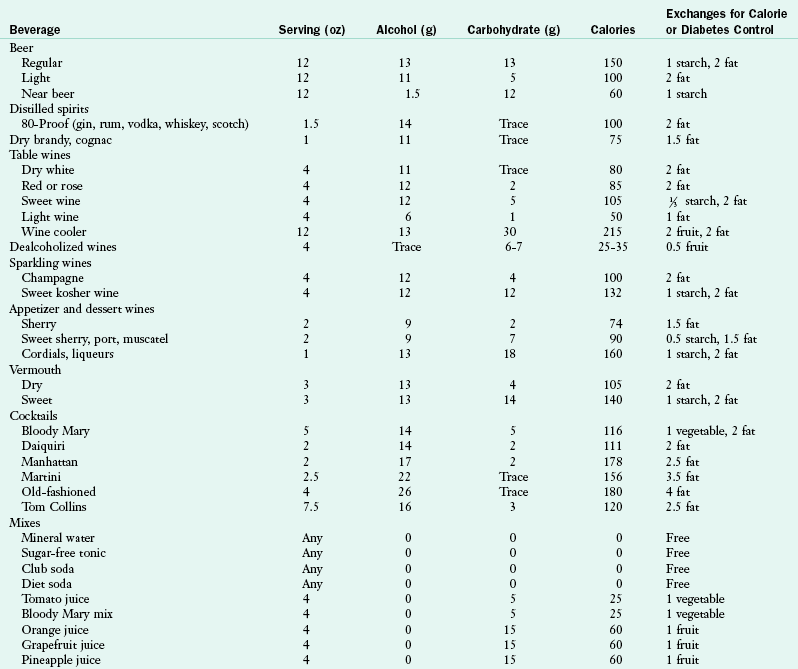Nutritional Facts on Alcoholic Beverages
Alcohol may have beneficial effects when consumed in moderation. The lowest all-cause mortality occurs at an intake of one to two drinks per day. The lowest coronary heart disease mortality also occurs at an intake of one to two drinks per day. Morbidity and mortality are highest among those drinking large amounts of alcohol. Guidelines:
• Alcoholic beverages should not be consumed by some individuals, including those who cannot restrict their alcohol intake, women of childbearing age who may become pregnant, pregnant and lactating women, children and adolescents, individuals taking medications that can interact with alcohol, and those with specific medical conditions.
• Those who choose to drink alcoholic beverages should do so sensibly and in moderation—defined as the consumption of up to one drink per day for women and up to two drinks per day for men.
• Alcoholic beverages should be avoided by individuals engaging in activities that require attention, skill, or coordination, such as driving or operating machinery.
Calories in Selected Alcoholic Beverages*
This table is a guide to estimate the caloric intake from various alcoholic beverages. A sample serving volume and the calories in that drink are shown for beer, wine, and distilled spirits. Higher alcohol content (higher percent alcohol or higher proof) and mixing alcohol with other beverages such as sweetened soft drinks, tonic water, fruit juice, or cream increase the amount of calories in the beverage. Alcoholic beverages supply calories but provide few essential nutrients.

From Franz MJ: Alcohol and diabetes: its metabolism and guidelines for its occasional use. Part TI, Diabetes Spectrum 3(4):210-216, 1990.
*The caloric contribution from alcohol of an alcoholic beverage can be estimated by multiplying the number of ounces by the proof and then again by the factor 0.8. For beers and wines, kilocalories from alcohol can be estimated by multiplying ounces by percentage of alcohol (by volume) and then by the factor 1.6.